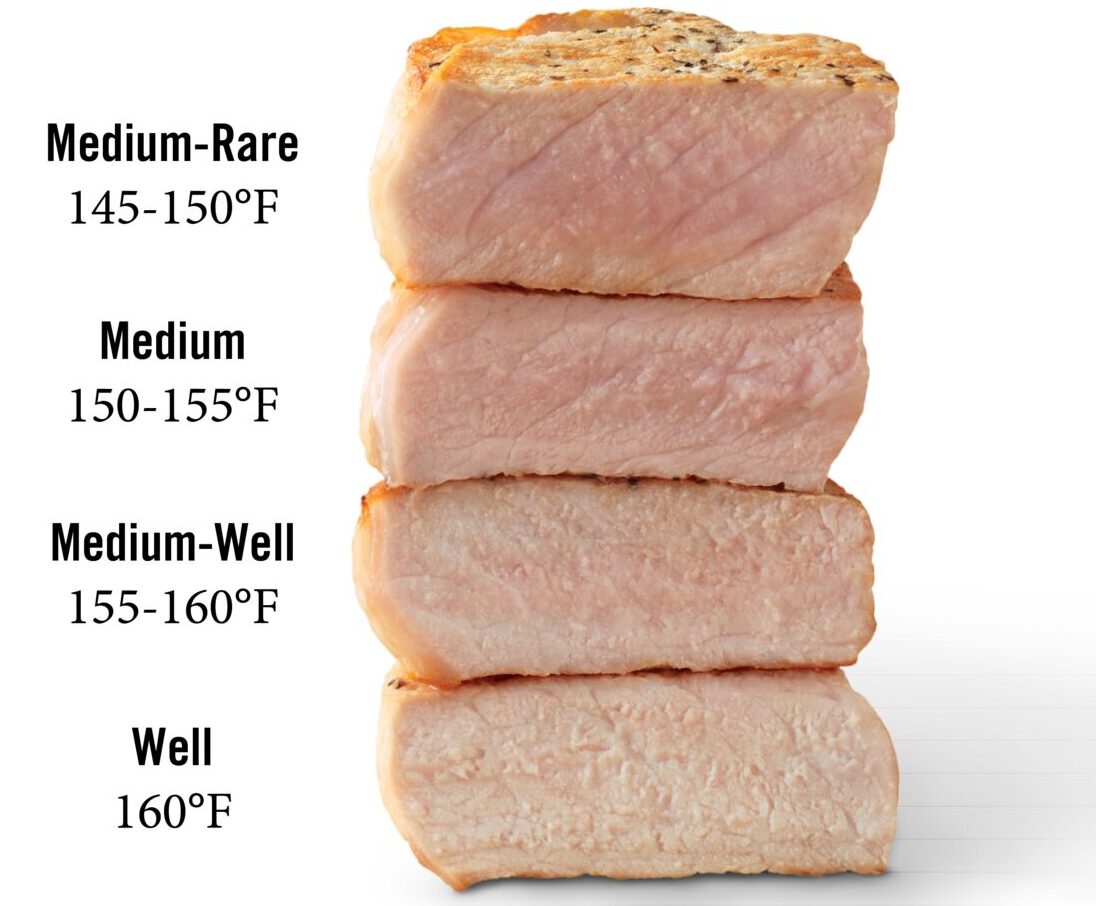Elevate Your Culinary Skills with Precise Cooked Pork Temperature
In the realm of culinary excellence, achieving the perfect pork dish hinges on mastering the art of temperature control. Welcome to our comprehensive guide, where we embark on a flavorful journey to discover the ideal cooked pork temperature. Bid farewell to common misconceptions and embark on a path that ensures both delectable taste and food safety.

Why Cooked Pork Temperature Matters: The Science of Savory Success
Before we dive into the specifics, let’s unravel why the cooked pork temperature holds such a pivotal role in your kitchen. Beyond mere preference, it’s a matter of culinary science and, more importantly, safety. Understanding the implications of undercooked or overcooked pork is the first step in your quest for culinary excellence.
Safe Minimum Internal Temperature for Pork: The Precise Point of Perfection
In the pursuit of gastronomic perfection, precision is key. Here, we define the precise cooked pork temperature that ensures not only palatability but also safety. Delve into the intricacies of achieving that perfect balance that will leave your taste buds tantalized and your dining experience delightful.
Factors Affecting Cooked Pork Temperature: Unveiling the Culinary Variables
Cooking pork to perfection is an art that involves multiple variables. In this section, we explore the factors that can influence the cooked pork temperature. From the thickness of your pork cut to the cooking method you choose, understanding these variables will empower you in the kitchen.
Symptoms of Undercooked or Overcooked Pork: Deciphering Culinary Clues
How can you tell if your pork is perfectly cooked? Understanding the symptoms of undercooked or overcooked pork is crucial. We delve into the subtle cues that your culinary creation may be in need of adjustments. From pinkness to dryness, we’ll ensure you’re equipped to identify and rectify cooking errors.
How to Achieve the Perfect Cooked Pork Temperature: Mastering the Culinary Craft
Cooking pork to perfection is both a science and an art. In this section, we provide a step-by-step guide to help you achieve the ideal cooked pork temperature consistently. Learn about the different types of meat thermometers and how to use them effectively. Plus, discover invaluable tips and tricks that will elevate your culinary prowess.
Pork Cut Specifics: Temperature and Timing – Tailoring Your Technique
Each cut of pork has its own unique characteristics and requires specific temperature and timing considerations for perfect results. In this section, we break down the recommended cooked pork temperatures for various cuts, such as pork chops, tenderloin, and ribs. We also discuss the ideal cooking methods and times for each cut, catering to your specific culinary needs and preferences.
The Art of Resting: Unleashing Flavor and Juiciness
In the culinary world, patience often rewards the palate. The art of resting your cooked pork after it leaves the heat source is a crucial element in achieving exceptional flavor and juiciness. We emphasize the significance of allowing pork to rest, explaining how this simple step enhances moisture retention and tenderness. Discover the optimal resting times based on the cut and size of your pork.
Common Questions and FAQs – Expert Insights at Your Fingertips
As you embark on your journey to mastering cooked pork temperature, you may have questions and curiosities. In this section, we address common queries related to cooking pork temperature, offering concise, easy-to-understand answers. Our goal is to ensure that you leave this guide with a comprehensive understanding of this vital aspect of culinary excellence.
FAQs About Cooked Pork Temperature
Q: What is the safe minimum internal temperature for cooked pork?
A: The safe minimum internal temperature for pork is 145°F (63°C). This ensures both safety and delicious taste.
Q: Can I cook pork to a lower temperature if I prefer it less done?
A: Yes, you can cook pork to a lower temperature, but it’s essential to follow recommended guidelines for safety. For slightly pink and juicy pork, aim for 140°F (60°C) and allow it to rest.
Q: How do I use a meat thermometer to check pork temperature?
A: Insert the meat thermometer into the thickest part of the pork without touching the bone. Wait for a few seconds until the temperature stabilizes and then read the reading.
Q: What are the symptoms of undercooked pork?
A: Symptoms of undercooked pork include pinkness near the bone, excessive moisture, and a slightly chewy texture.
Q: How can I tell if my pork is overcooked?
A: Overcooked pork often appears dry, tough, and excessively browned. It may also lose its natural juices.
Q: Can I rely on visual cues alone to determine pork doneness?
A: While visual cues can be helpful, it’s safer to use a meat thermometer to ensure precise temperature readings and avoid undercooking or overcooking.
Q: Is it necessary to rest pork after cooking, and how long should I rest it?
A: Resting pork after cooking is essential to retain moisture and flavor. Generally, a rest of 3-5 minutes for thin cuts and 10-15 minutes for larger roasts is recommended.
Q: Can I reheat pork that has been cooked to the correct temperature previously?
A: Yes, you can safely reheat pork that has been cooked to the correct temperature. Reheat it to an internal temperature of 165°F (74°C).
Q: What types of marinades or rubs work well with pork to enhance flavor?
A: Pork pairs well with various marinades and rubs, including those with ingredients like garlic, rosemary, thyme, honey, and soy sauce. Experiment to find your favorite flavors.
Q: Can I use the same cooked pork temperature guidelines for different cuts of pork?
A: While the guidelines for the safe minimum internal temperature remain the same, cooking times may vary based on the cut and thickness of the pork. Always use a meat thermometer to verify doneness.
Conclusion:
In the concluding section, we summarize the key takeaways from our exploration of cooked pork temperature. We reinforce the importance of achieving the ideal temperature for both safety and culinary delight. Armed with this knowledge, you are now poised to elevate your culinary experience and impress your dining companions with perfectly cooked pork dishes.




